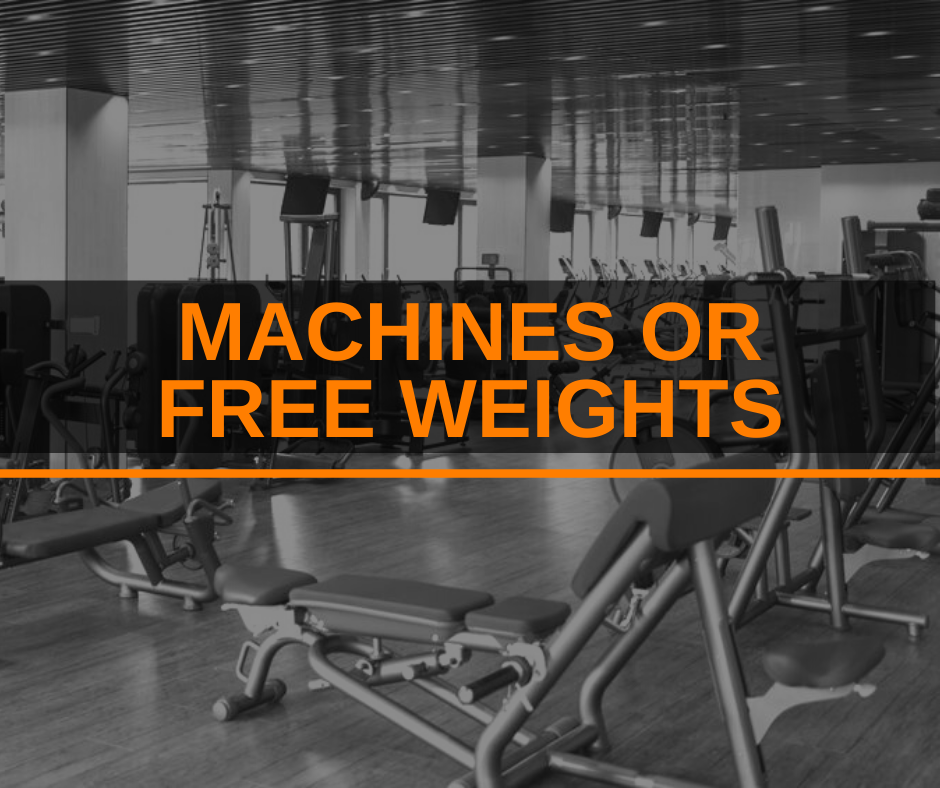A long-debated topic among certified personal trainers is deciding the mode of resistance training that yields the greatest benefits. One camp believes machine weights are safer and easier for novice exercisers to adapt to. Another suggests free weights will optimize muscle growth and development while challenging joint stability. Really, if we take a closer look, we see that there are benefits and considerations to using either machines or free weights.
Before examining the details of each approach, it’s important to note – weight is weight. Five pounds of resistance is five pounds of resistance, whether it comes in the form of a dumbbell, resistance band, kettlebell, or machine (however, it’s worth noting that the numbers that appear on the machine weights don’t always translate accurately because of the physics of pulleys).
Ultimately, your muscles themselves have no preferences when it comes to the source of the resistance being applied. Muscle tissue will respond to progressive overload regardless of whether it comes from a dumbbell, barbell, a selectorized machine, resistance band, medicine ball, or another weighted implement. But, let’s examine the effects of using machines or free weights, independently.
Resistance Training with Machine Weights
Machine weights offer tremendous benefits for novice and experienced lifters alike. These tools aren’t necessarily “better” than another source of resistance. Rather, we can think of each type of resistance source as serving a specific purpose. The following are advantages and considerations to using a machine-based weight.
Advantages
- The need for a spotter or lifting partner is nullified with the use of a machine.
- Great for large muscle group movements such as leg press, hip sled, or lat pull down.
- Movement path is controlled and fixed, reducing risk of injury or poor form.
- Offers a great option for time-controlled workouts focused on a circuit-based design
- Adjusting weight is easy – pulling a pin or turning a dial versus loading and unloading weight plates.
Considerations
- The fixed pattern of movement may limit a client to experience a full range of motion
- Machines are typically designed for “average-sized” individuals. If you have a larger or smaller client, the machine may hinder their experience or promote improper use.
- The fixed pattern of movement inherent to machines may reduce the ability to strengthen stabilizing muscles.
Resistance Training with Dumbbells or Free Weights
In contrast, free weights offer other advantages and considerations separate from machine-based exercises.
Advantages
- Free weights infinitely adapt to the user’s range of motion.
- Requires core stabilization thereby strengthening muscles responsible for posture and core strength.
- Free weights more closely resemble sport-specific movements.
- They are portable and moveable, and hence, more convenient.
- Clients can use different grips for free weight exercises (this isn’t always the case with machine weights).
- A greater variety of exercises can be performed.
- Can help expose and pinpoint asymmetrical differences and muscular imbalances.
Considerations
- Adequate balance is required which can be a struggle for some clients who are inexperienced with lifting weights.
- Users tend to use momentum more so with free weights than machines, which detracts from muscular control.
- A spotter is often required for more complex movements that use a higher amount of weight.
- Form is crucial for injury prevention. It’s easier to allow technique to deteriorate before terminating the exercise.
What About Cables and Band Resistance?
Then you have resistance cable machines and portable resistance bands, which provide a challenge somewhere in between free weights and machines. While cable machines offer resistance in the same way a selector machine does, it allows freedom of movement in at least two planes of motion, recruiting more stabilizing forces. Bands function similarly though, what makes them unique, is the degree in which resistance increases as the band is pulled more taut, challenging the exerciser most at the peak of a movement.
The Final Word on Choosing Machines or Free Weights
When it comes to resistance training, one approach isn’t necessarily more effective than another. The mode of resistance you select or suggest for your clients will depend upon the goal of the movement, their general strength and size, preference, and the type of program they are following.
I often recommend to my students and clients a variety of resistance exercises that require different types of weighted implements. This approach allows individuals to experience different modes and develop strength in different ways. Again, weight is weight; muscles don’t have a preference for the type of resistance used.
With proper programming, intensity, and instruction, your clients will progress and see the gains they are working to achieve whether they use machines or free weights or both. Take the time to teach your clients about the individual benefits and considerations associated with different approaches to programming for resistance.



